Arch Bridges
Overview
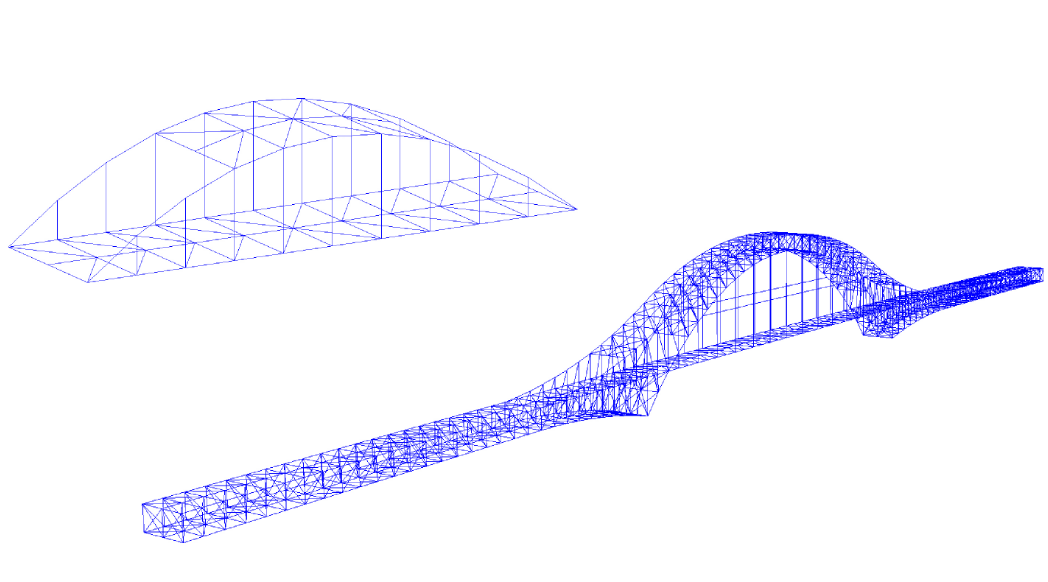
Modeling
+ Various elements (Truss, Beam,
Plate, Cable and etc.)
+ Tapered group
+ Sectional property calculator
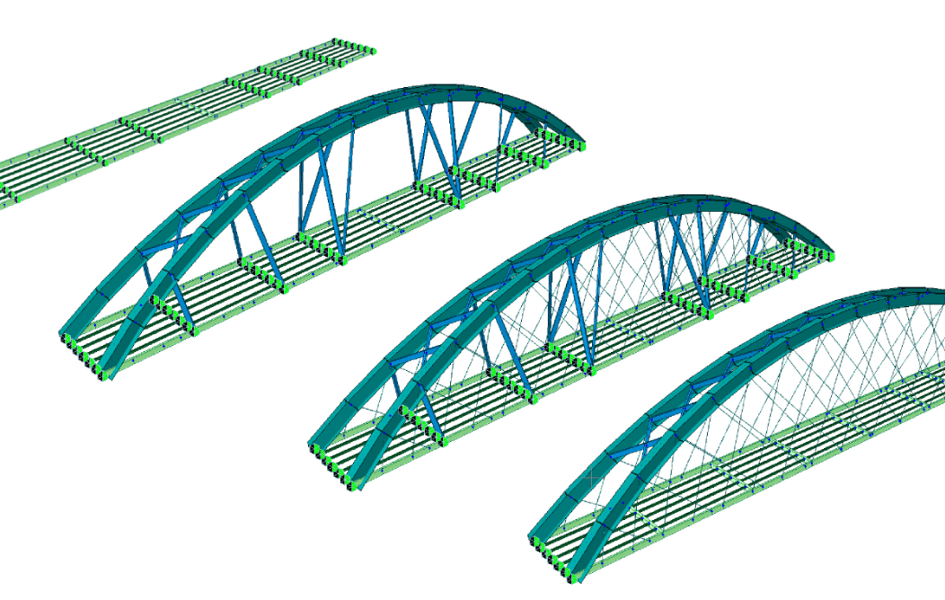
Analysis
+ Construction stage analysis
+ Buckling analysis
+ Moving load analysis
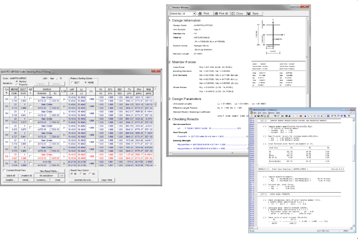
Design
+ Unknown load factor
+ Cable force tuning
+ Steel design
Arch bridges can be easily modeled by using various element types, unlimited section generation functions, various boundary conditions, and load input functions. After the modeling of the bridge is completed, the user can perform construction stage analysis, moving load analysis, and static analysis. Nonlinear analysis can also be performed for a more detailed review of the analytical model. After completing the analysis, sections can be reviewed with the Steel design function. For cable arch bridges, the user can easily adjust the tensioning force of the cable by using the unknown load factor and the cable force tuning functions.
Details
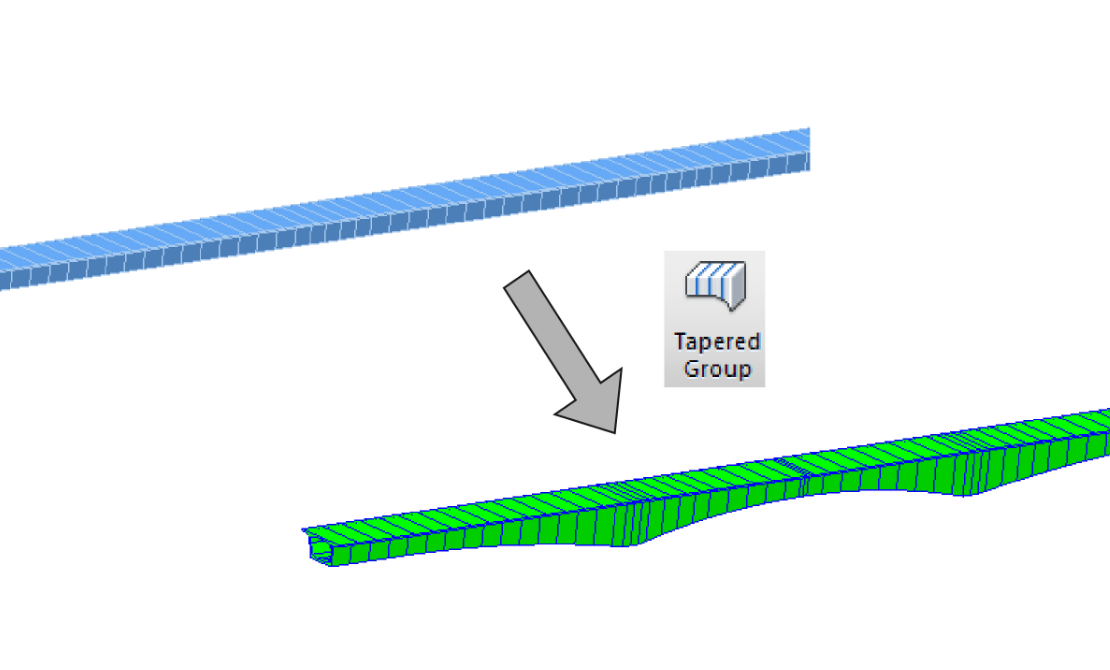
Tapered Group
The Tapered Group function makes it possible to create tapered sections more quickly. This function is also provided to solve the inconvenience of creating multiple tapered section properties when tapered sections are applied to multiple elements. By using the tapered group function, the user can implement cross-sectional changes in multiple elements linearly or polynomially. This function is available for all structures with varying sections including balanced cantilever bridges, arch ribs with tapered sections, etc.
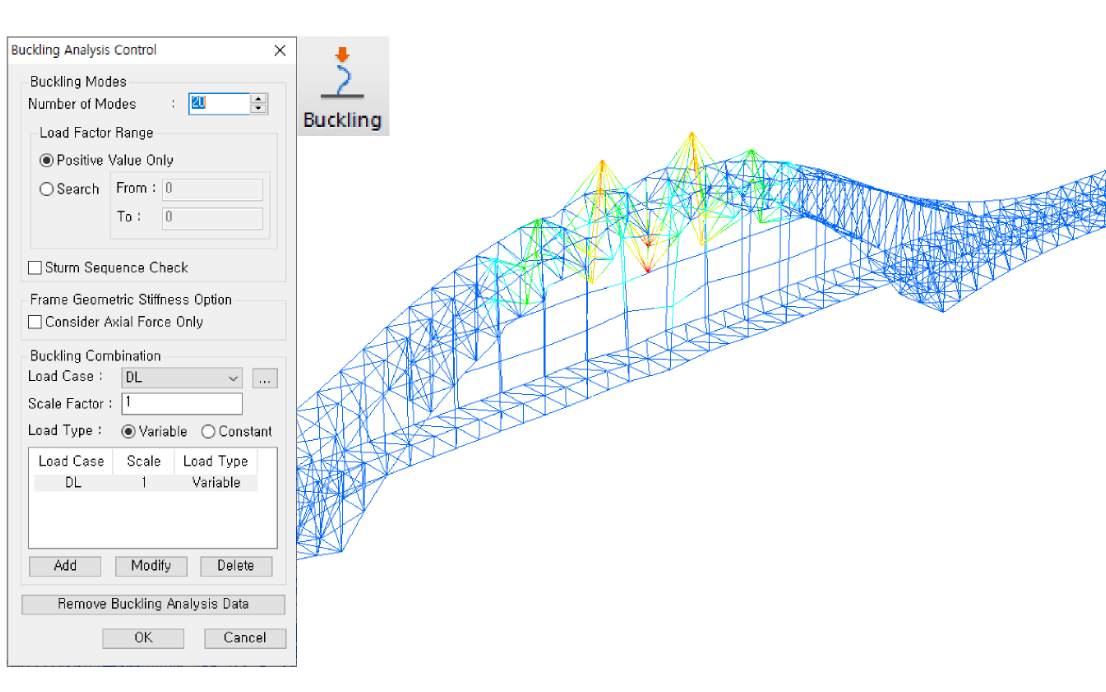
Buckling Analysis Control
This function is used for buckling analysis in midas Civil. After a simple setup, the program proceeds with the buckling analysis using the geometric stiffness matrix and the stiffness matrix of the structure. The geometric stiffness matrix is calculated from the static load analysis results selected by the user.
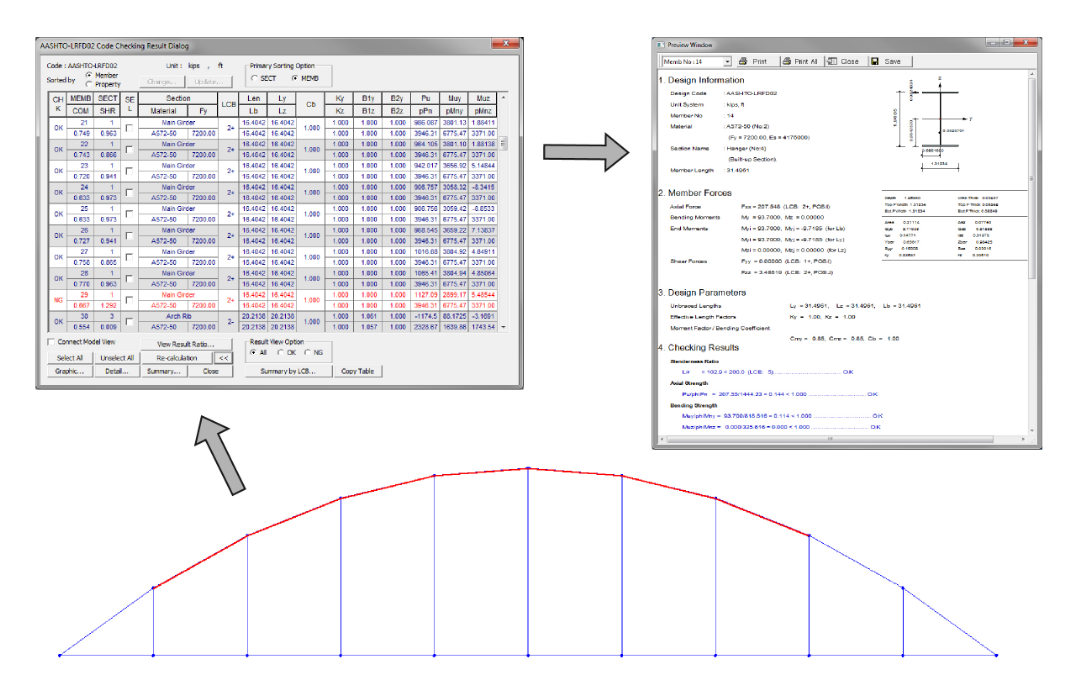
Steel Design
The Steel Design function verifies the strength of overall steel members reflecting live load reduction factors, correction factors for seismic loads, and moving loads. It also reanalyzes and reevaluates the strength of selected members due to varying design properties and criteria. It provides an optimal section design feature.